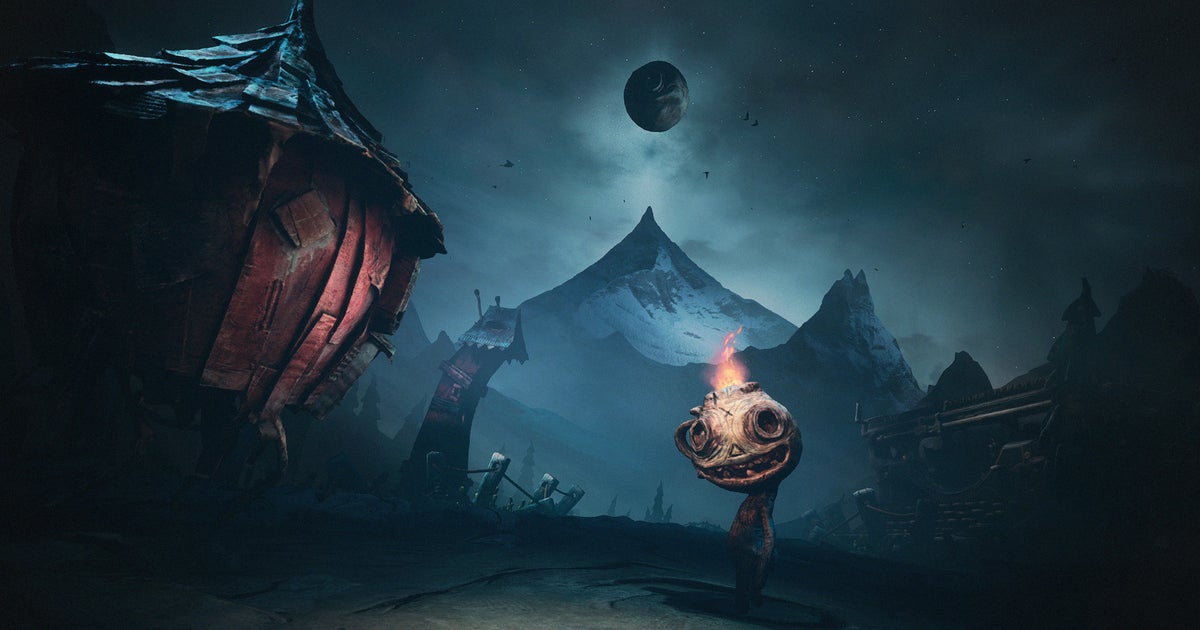The Midnight Walk review | Eurogamer.net

A wondrous dreamlike world to explore in or out of VR, but a story that doesn’t always hit as hard as you might want.
My son’s school is putting on a play of Alice in Wonderland at the end of the summer term, so I thought we’d all watch a movie version of the story to get him a little bit more enthused about it. He didn’t want to watch the cartoon (shame), so we settled on the Tim Burton sort of sequel, which sees Alice returning to Wonderland despite not realising she’d been there before. You didn’t start reading this for a review of a movie released in 2010, so I’ll be brief: It’s better than I remembered it being, but was somehow at once dazzling to look at and rather bland. Or maybe I’ll just try a different analogy: like eating a glorious looking pizza that hadn’t been topped evenly. The Midnight Walk, for good and bad, shares far too many similarities with said film and an uneven culinary experience.
The Midnight Walk, from Moonhood (a new studio but with connections to Zoink Games, developer of Fe and Lost in Random) is a first-person folksy horror adventure game, with some mild stealth and occasional puzzles. It’s playable in VR or on a standard screen, and sees you in the role of the mysterious Burnt One, who finds purpose travelling alongside a flaming pot companion, Potboy. This is a quest to reach Moon Mountain, for Potboy to achieve his destiny, but also a collection of loosely connected tales around the themes of fire and darkness.
I’m a bit down on The Midnight Walk, but that stems from my feeling that this could have been a genre classic but ended up being just… fine. Worth emphasising is how clear it is that it’s been created with an artistic vision – and immense skill – which lands from the moment you begin. Characters, objects, the world, it was all created by model artists and then scanned for use in the game, and that work has paid off quite spectacularly in the stop-motion-esque playable gothic whimsy you can explore. My issues with it aside, which I’ll get to soon, The Midnight Walk is without doubt a delightful audiovisual experience. Those characters, significant and minor, all play their part in selling this world; the voice work is exceptional, the music tonally spot-on for a world so bleak, but with an inkling of hope.
Yet, I finished The Midnight Walk, and felt very little. The conclusion itself actually nails an emotional beat that was touching and unexpected in a way few games manage so sincerely, but the story as a whole just didn’t quite do it for me. There’s sadness in the game’s five tales, there’s loneliness, grief, and regret (it’s these that shine through most strongly, especially via Potboy), but there’s also light in the darkness, warmth from the flames, and a handful of “made you think” moments (especially noteworthy in how some of the ‘monsters’ are dealt with), but I wish I felt the same way about this overarching story as I do the key figures – the aforementioned Burnt One, Potboy, and bizarrely a walking house named Housy. These three kept me keen to see the story through over the four to five hours of this relatively brief journey, the rest washing over me, despite some strong intentions.

As a game, not just a story, The Midnight Walk is rather simple. Fire is a key component in almost all you’re asked to do, so you’ll be frequently lighting matches to burn candles, firing matches out of a gun to… erm… burn candles, asking Potboy to, yes, burn candles, and using these newly lit fires to navigate paths around some truly hideous monsters. Sound plays its part, too, with many of the game’s puzzles asking you to close your eyes and listen for the answers (something that works brilliantly, especially if you’re wearing headphones and ideally in VR, where you do actually close your eyes). This eye-closing mechanic also changes the world and monsters in ways to allow your advancement through an area – blink while looking at the glowing eye of a frog statue and a key might appear, close your eyes as a blue-eyed beast charges and it will be a statue when you reopen them.



In the latter half of The Midnight Walk the visuals are some of the most captivating I can remember. Stylistically the imagery throughout The Midnight Walk is dreamlike, but it’s ramped up here, with colossal, impossible structures and a vastness that suggests a world that never ends. My eyes were eager to take it all in, but it’s at this visual highpoint that the gameplay started to feel a little too burnt out. Collect some items to open a locked path, burn some things to open a locked path, burn some things and don’t get eaten so you can go down the newly opened path. In VR some of these criticisms fall away as you need the simplicity to make things manageable, and the sense of scale within the VR world makes the screenshot-worthy environments the kind of thing you sit and gawp at, neck craned – I honestly did have a sore neck the day after playing this. But, the VR implementation isn’t perfect, with basic actions so much easier when playing with a standard controller on a flat screen. In effect, there’s no ideal way to play The Midnight Walk, although I’d steer people towards VR for the added sense of place it brings.
When you bite into a pizza you want (expect) to find a complete experience in every mouthful. There’s cheese, tomato, peppers, mushrooms, olives, a chewy texture to the base. It’s hard for a pizza to be bad, and The Midnight Walk certainly isn’t, but sometimes you find the tomato isn’t spread out properly or the cheese is too thin and the base too crunchy. At points the The Midnight Walk delivers, but far too often I found myself lamenting the fact that too much of my time was spent hoping for that next perfect bite, wondering when a story beat would hit home, keen to see if a new gameplay mechanic would excite in the way blinking did. I love Potboy’s smiling face, though, and he is reason enough to go on this long, dark, walk. Do it for him, I think the motivational boards say, and I think you should.
A copy of the game was provided for review by the publisher.



